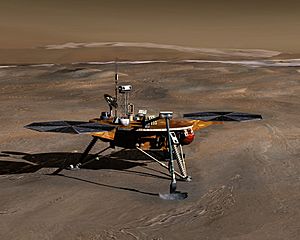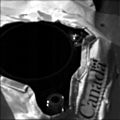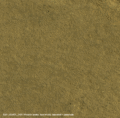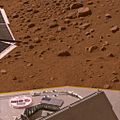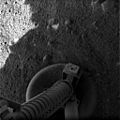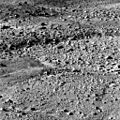Phoenix (spacecraft) facts for kids
The Phoenix was a special robot spacecraft sent to the planet Mars. Its main job was to look for water and signs of tiny life forms, called microbes, on Mars. It was part of a program called the Mars Scout Program.
Phoenix was launched from Florida on August 4, 2007. It traveled through space for many months and landed safely on Mars on May 25, 2008.
Scientists used the tools on board Phoenix to study the Martian soil and ice. They wanted to find places where microbes might have lived, or could still live. They also wanted to learn about the history of water on Mars. The mission ended on November 10, 2008.
Contents
Why Phoenix Went to Mars
Phoenix had two main goals when it landed on Mars.
- Goal 1: Find Water and Ice. Scientists knew there was water ice near the Martian poles. Phoenix landed in a northern polar region to dig into the ground and find this ice. It also looked for any signs that liquid water might have been there in the past.
- Goal 2: Search for Life. Phoenix carried special labs to test the Martian soil. It looked for chemicals and conditions that could support tiny living things, like bacteria. It didn't look for big aliens, but for the building blocks of life.
How Phoenix Explored Mars
Phoenix was a stationary lander, meaning it stayed in one spot after landing. It had several important tools to help it explore.
The Robotic Arm
Phoenix had a long, robotic arm that could dig into the Martian soil. This arm was like a small shovel. It could dig trenches up to 18 inches (45 centimeters) deep. The arm collected samples of soil and ice. It then delivered these samples to the science labs on the lander.
Science Labs on Board
Phoenix carried several mini-labs to analyze the samples.
- Wet Chemistry Lab: This lab mixed Martian soil with water. It then tested the mixture to see what chemicals were in the soil. This helped scientists understand if the soil was good for life.
- Thermal and Evolved Gas Analyzer (TEGA): This tool heated up soil samples. When heated, different gases would come out. By studying these gases, scientists could learn about the types of minerals and water in the soil.
- Surface Stereo Imager (SSI): This was like Phoenix's eyes. It took color pictures of the landing site and the trenches dug by the arm. It could also create 3D images.
- Meteorological Station (MET): This station measured the weather on Mars. It checked the temperature, pressure, and wind speed. It even had a special sensor called a lidar that could detect dust and clouds in the Martian atmosphere.
Discoveries and End of Mission
Phoenix made some exciting discoveries during its mission.
- It confirmed the presence of water ice just below the surface. The robotic arm dug down and exposed bright white ice.
- It found chemicals in the soil that suggested Mars might have once had a wetter environment.
- The weather station provided valuable data about the Martian atmosphere.
The Phoenix mission was planned to last for 90 Martian days. A Martian day is about 40 minutes longer than an Earth day. Phoenix actually worked for over five months, much longer than expected! It stopped working when the Martian winter arrived. Less sunlight meant its solar panels couldn't make enough power to keep it running.
Images for kids
-
A comparison of sizes for the Sojourner rover, the Mars Exploration Rovers, the Phoenix lander and the Mars Science Laboratory.
-
Phoenix Mars Lander being worked on by NASA engineers. The planned operational life of the Phoenix lander was 90 Martian days. Each Martian day is 40 minutes longer than an Earth Day.
-
A prototype wet chemistry beaker showing some of the electrochemistry sensors on the sides of the beaker.
See also
 In Spanish: Phoenix (sonda) para niños
In Spanish: Phoenix (sonda) para niños


